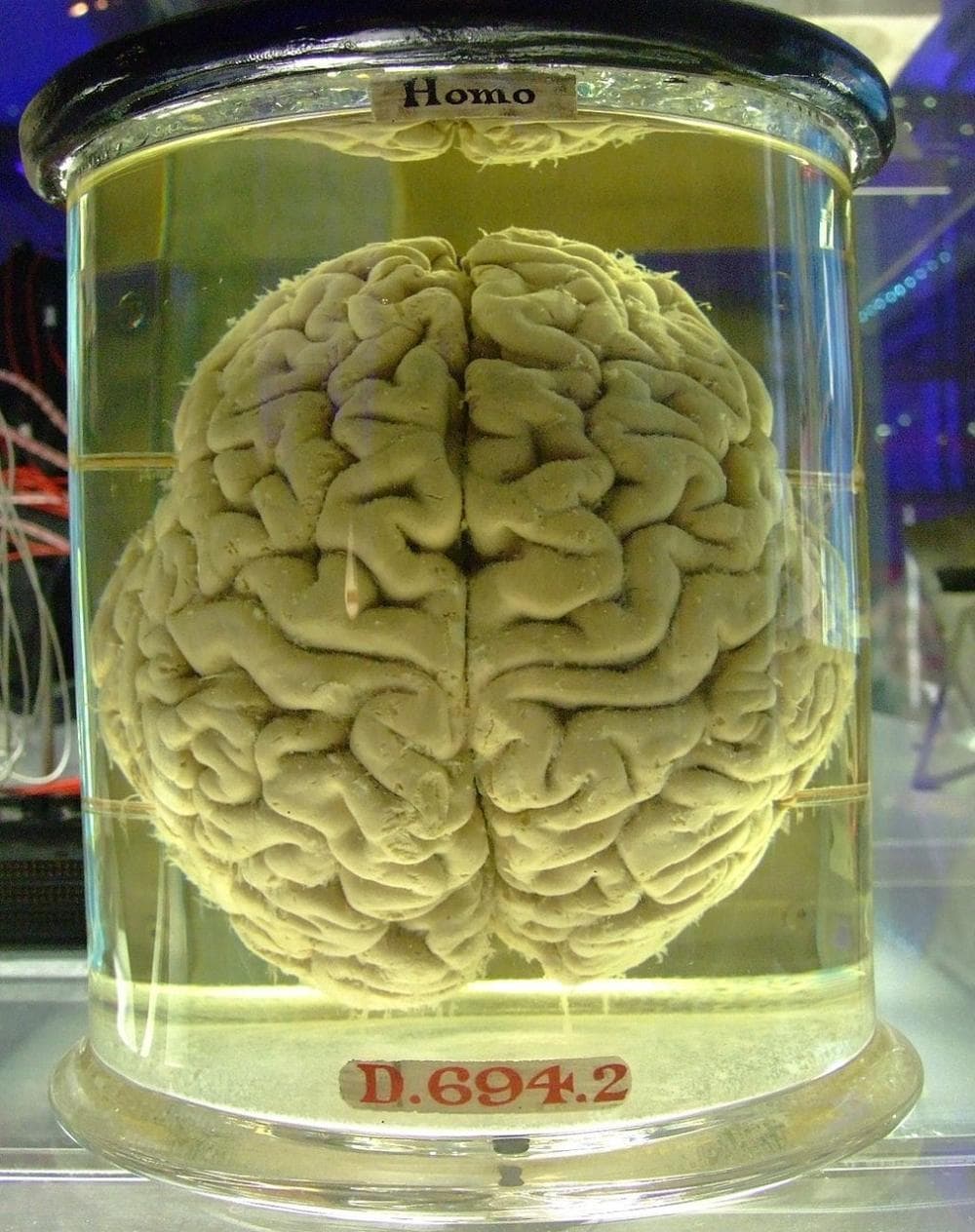Advertisement
Nature: Recipe For A (Primitive Precursor Of A) Human Brain In A Jar

So delicious! No, I don't mean vat-grown brain pickles. I mean the delicious frisson I get every time real-life science news seems to echo long-beloved science fiction in uncanny ways.
So to today's very serious report in the prestigious journal Nature: Researchers have found a way to build a sort of a human proto-brain in the lab. (Of course, their work, striking as it is, falls miles short of the classic cinematic depictions of brains in jars, but let's just take a moment here to recall Steve Martin's true love in "The Man With Two Brains," and the ancient black-and-white sci-fi flicks featuring disembodied brains. "Brain in a jar" even has a whole page on tvtropes.org.)
Now to 2013 reality: The scientists, based mainly at the Institute of Molecular Biotechnology in Vienna, used stem cells to engineer a three-dimensional precursor of a human brain, about the size of a pea. They say this miniature proto-brain could help illuminate how the human brain develops — and what can go wrong as it does.
They grew the stem cells into a brain-like structure at about the level of a nine-week-old human embryo’s brain. And they showed that this primitive mini-brain could cast light on a specific disorder: microcephaly, a rare birth defect in which the brain doesn’t grow nearly as big as it should.
The work is still in very early stages, but the researchers say they hope it can also be used to help treat more common brain diseases that begin early in life, including schizophrenia and autism.
They began with human stem cells from adults, and helped them grow and self-organize into a primitive but strikingly brain-like structure, which they call a cerebral organoid. An organoid is a structure like an organ — so this isn’t a full-fledged brain, but if you consider that the human brain is known as the most complex organ in the animal kingdom, it’s still pretty impressive.
So what exactly is the recipe for whipping up a human brain?
Well, you get the stem cells going and nourish them in a special culture, or soup, and then transfer them to a biological scaffold, or matrix, to grow on and become more complex tissues. Lead researcher Madeline Lancaster say that scaffold begins "the special part" of their method. And the second part of the secret sauce if a whole lot of agitation.
"These complex tissues were then transferred to a special culture vessel called a spinning bioreactor," she told reporters at a phone press conference. "This spinning bioreactor constantly agitates the medium and organoids inside to allow for better nutrient and oxygen exchange, and this allows them to grow much larger than has previously been done. Overall, this results in so-called cerebral organoids, which are essentially 3-D tissues with specific characteristics of human brain development."
So there you have it, and the final dish is similar to the brain in a nine-week-old human embryo, which is where the organoid’s development basically stopped, though it could be maintained at that stage for months.
So much for developing a full-fledged human brain in a dish, condemned to contemplate itself for all eternity.
The researchers say they don’t see a way to use this recipe to reach higher brain functions like thinking or seeing. What they do foresee is the possibility someday of using stem cells from patients to develop these little brains, these organoids, to help figure out what goes wrong in diseases like schizophrenia --- where it can be very hard to pinpoint which genes or other factors are responsible.
Senior researcher Juergen Knoblich,:
"The advantage of our model is that we do not need to find the gene before we can model the disease," said senior researcher Juergen Noblich. "We can just generate [...] cells from an affected patient and ask, can we now see the defect in the development of the organoid? And once one has seen this, one can of course reintroduce or manipulate certain genes that are suspected to be responsible for the severity of the disease and ask what are the individual contributions?"
Of course, that’s a long way off, but talk about science fiction: You have a patient with schizophrenia or autism, you take the patient’s cells, grow them out into a brain-like organoid and try to see what went wrong when the patient’s brain was developing.
The researchers did something much like that with microcephaly, their initial proof that this technique could be useful. They took cells from a patient with microcephaly and found that when they grew them out into one of these organoids, it started making neurons too early, rather than expanding its population of stem cells that could multiply and make more cells. So they may have found a key to microcephaly.
Like most basic science work, actually trying to use this technique to treat patients is surely years and years away. But the researchers point out that in more of the near term, these little organoids could be very useful for testing drugs.
The full Nature paper should be here, though I've had some trouble with the link.
This program aired on August 28, 2013. The audio for this program is not available.
